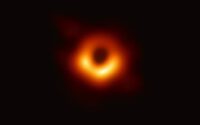Exoplanet is first detected with potentially life-supporting atmosphere: NASA
The James Webb Space Telescope has detected what could be distinct signs of life on a “potentially habitable” world nearly 50 million lightyears away.
Researchers from the Universities of Michigan and Montreal analyzed late 2023 data sent from the high-powered JWST optical. They flagged potential oceans and air sources on the exoplanet dubbed LHS 1140 b, situated within the constellation Cetus in our night sky.
Although the name isn’t so moving, its potential is.
“Of all currently known temperate exoplanets, LHS 1140 b could well be our best bet to one day indirectly confirm liquid water on the surface of an alien world beyond our solar system,” said lead author Charles Cadieux.
“This would be a major milestone in the search for potentially habitable exoplanets.”
NASA describes the planet as a “rocky world,” 1.73 times the radius of Earth and 5.6 times its mass. Colorwise, its outer appearance evokes a cross between Mars and Jupiter.
Fellow researcher Ryan MacDonald of NASA added that this “is the first time we have ever seen a hint of an atmosphere” on planets outside our solar system — it would take the Voyager probe 863,000 years to reach — with a rocky or icy texture.
Actually, if water is there, it is likely beneath dense and frozen ground. The landscape is described closer to the ice planet Hoth from “Star Wars.”
“This would be a major milestone in the search for potentially habitable exoplanets.”
lead study author Charles Cadieux
He went on to say that LHS 1140 b is “one of the best small exoplanets” that can support a thick atmosphere. The new findings support a major milestone in the search for extraterrestrial life.
“We might just have found evidence of air on this world.”
LHS 1140 b is believed to exist in a “Goldilocks Zone” that, similar to Earth, is an ideal distance from its star — a thermal object about a fifth to the scale of our sun. Due to that, its temperatures can likely support liquid water, which estimates indicate could be 20% of the planet’s mass.
There are also suggestions that the exoplanet’s atmosphere may share similar traits to our own, such as the presence of nitrogen.
“Our initial reconnaissance of LHS 1140 b with JWST has revealed this to be perhaps the best habitable zone exoplanet currently known for atmospheric characterization,” added MacDonald.
“While we need more JWST observations to confirm the nitrogen-rich atmosphere, and to search for other gases, this is a very promising start.”


